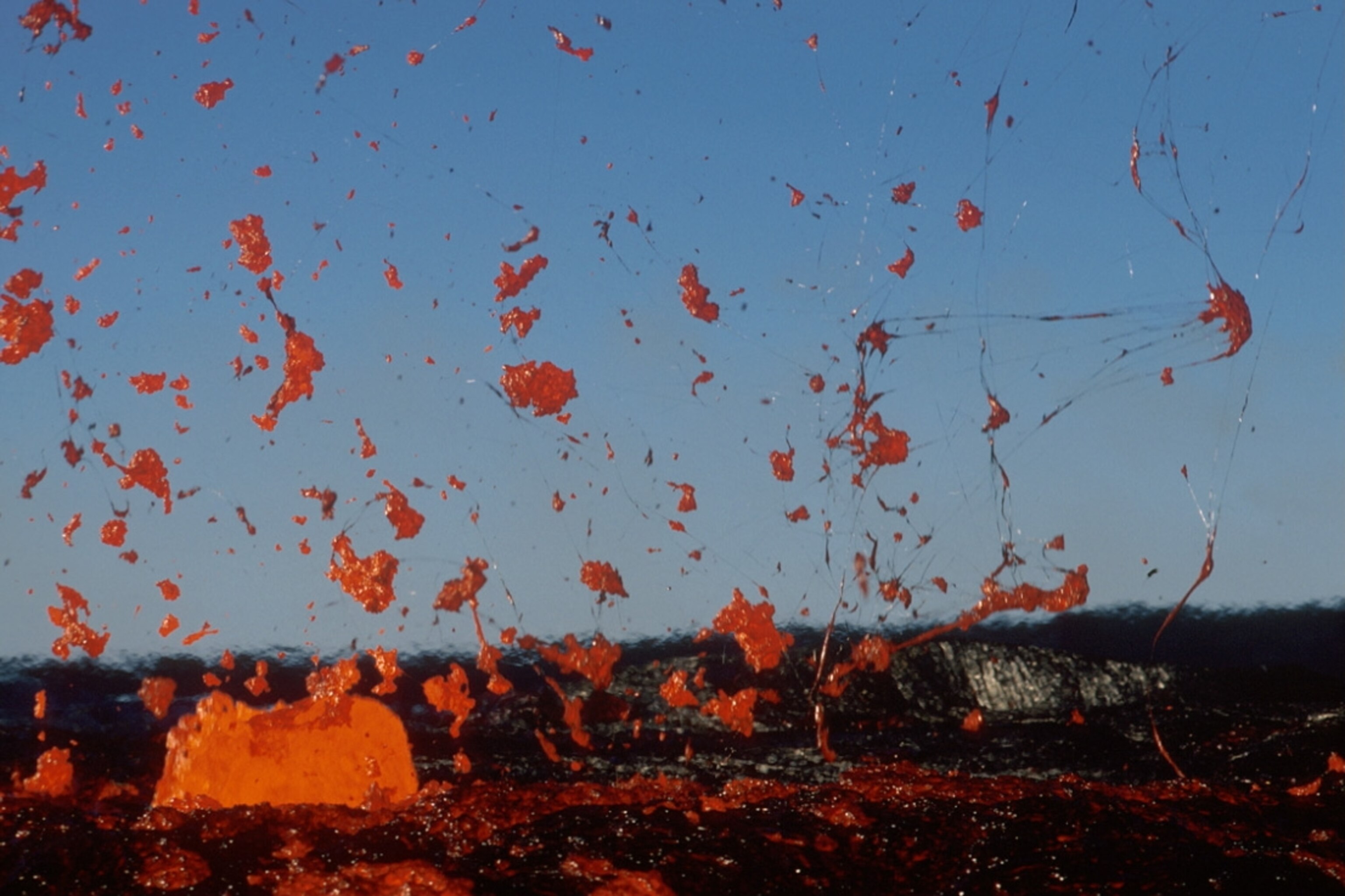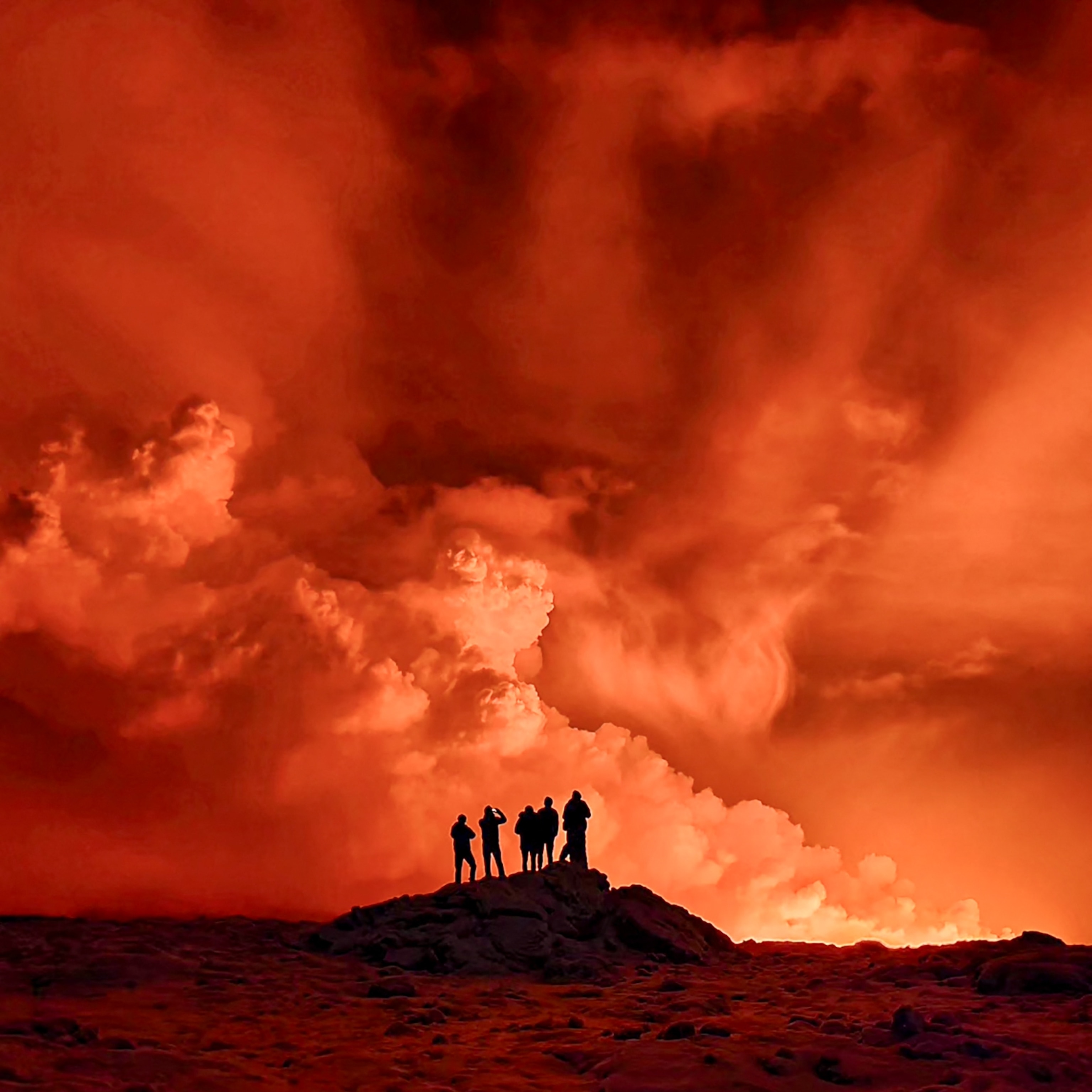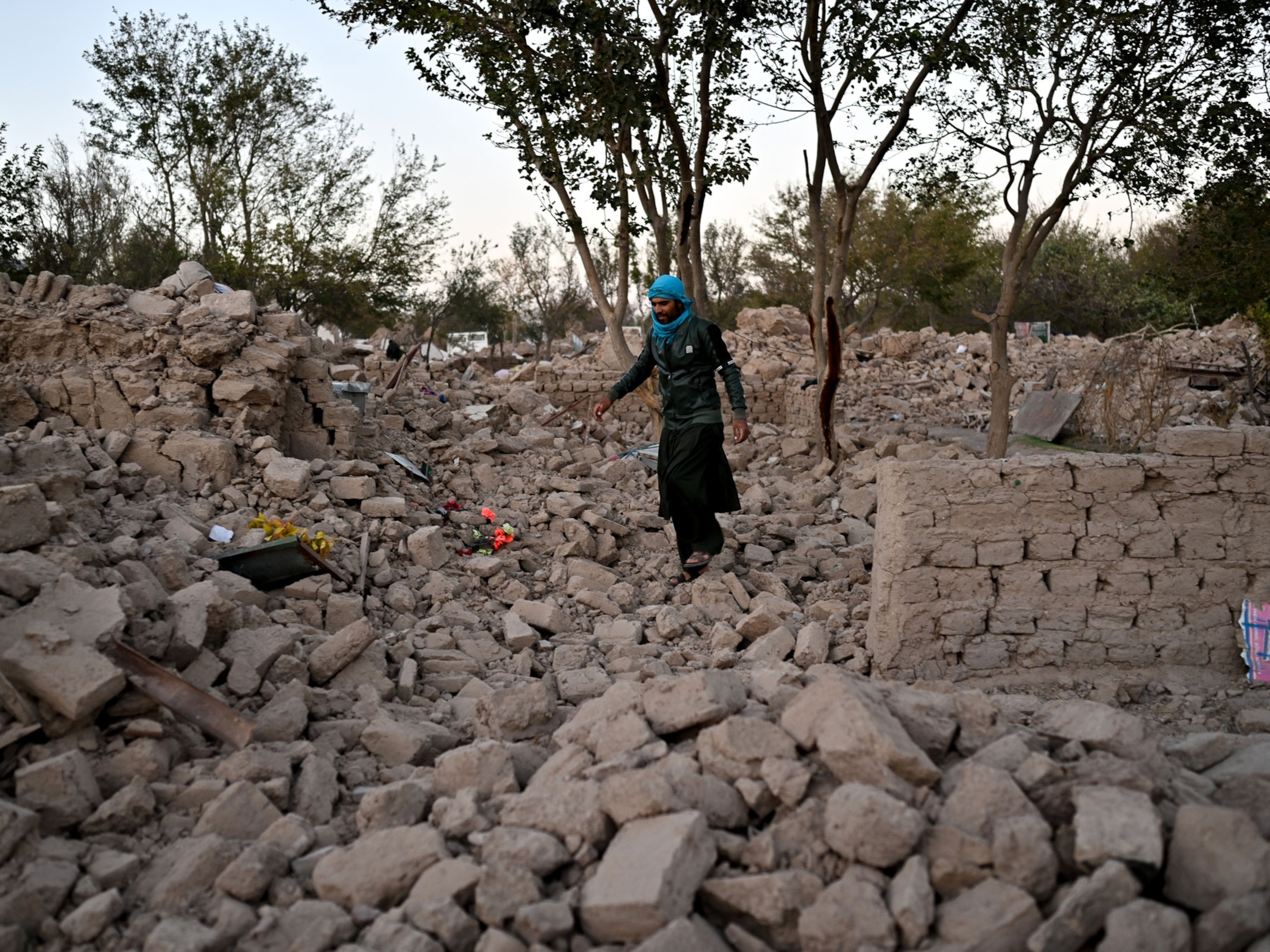She fell in love with the majesty of volcanoes—and changed how science sees them
Katia Krafft traveled to volcanoes around the world to unlock their mysteries, capture their beauty, and raise awareness of their risks.
Sheathed in a shiny metallic suit, Katia Krafft's small frame is dwarfed by the crimson curtain of molten rock that bursts from the ground before her. The dramatic moment was captured in a photo taken atop Iceland's Krafla volcano in 1984, during the fiery peak's final gasps of a multi-year-long eruption. Looking at the image, one can almost feel the volcano's heat, hear its roar, and sense Krafft's heart pounding as the volcanologist does what she loves most: bearing witness to our planet's fiery fury.
"Once you see an eruption, you can't live without it because it's so grandiose, it's so strong," Krafft says in the National Geographic documentary Fire of Love now streaming on Disney+.
Krafft was a fearless pioneer in volcanology, studying the explosive peaks at a time when there were few women in the field. The moment a volcano exploded, she and her husband, Maurice Krafft, also a volcanologist, dropped everything to analyze and capture the beauty and mystery of each event. These stunning close-ups allowed geologists to dissect the intricate details of each eruption like never before. The Kraffts wrote books, made movies, and embarked on media tours to share their knowledge with people around the world, raising awareness of volcanic risks.
"That was really still the infant days of volcanology," says Janine Krippner, a volcanologist based in New Zealand. For Krippner and many other women scientists worldwide, Katia, in particular, also helped spark their own desires to enter this field. "She gave me the courage to really push forward," says Krippner, who yearned to be a volcanologist since she first learned of the profession at age 13.
Explosive entrance
Katia Krafft—Catherine Joséphine Conrad before marriage—was born in the Rhine valley of northeast France in 1942, during the height of World War II. The tumultuous human world drove both Katia and Maurice to seek comfort in nature. "We were disappointed in humanity," he once said. "Since a volcano is greater than man, we felt that was what we need—something beyond human understanding."

Indeed, when the duo studied at the University of Strasbourg in the 1960s, little was known about the forces that drive our restless planet. Plate tectonics was just gaining acceptance. This foundational theory describes the dynamics of the fractured outer layer of our planet. Each tectonic plate is perpetually moving, colliding in some places and pulling apart in others, building volcanoes along their boundaries.
The Kraffts set out with little money and lots of determination to understand these mysterious geologic beasts, capturing stunning videos and imagery. In one, seen in the documentary, Katia calmly approaches a fountain of incandescent lava. Dressed in a red jacket and matching hat, she raises an arm to her face as a shield from the intense heat. Another snippet shows a lobe of gooey rock cooled just enough to form a black crust. A boot squishes the mound, igniting flames that the boot-wearer casually shakes away.
"Once you see an eruption, you can't live without it because it's so grandiose, it's so strong."Katia Krafft
The pair initially focused their work on so-called effusive eruptions, in which lava streams from the volcano. While still dangerous, effusive eruptions are usually less deadly in comparison to their explosive relatives. But two deadly disasters led the Kraffts to turn their lenses on the devastating impacts of explosive blasts. In 1980 the eruption of Mount St. Helens in Washington killed 57 people, and in 1985, Colombia's Nevado del Ruiz unleashed a blast that triggered deadly mudflows that killed more than 20,000 people.
The Kraffts used their footage of explosive eruptions to explain the complex risks and uncertainties of these disasters. "It changed our ability to communicate volcano science," says volcanologist Rebecca Williams at the University of Hull, in England, who was a science advisor for Fire of Love.
Their videos are credited as one of the primary reasons that officials in the Philippines took the warning signs of Mount Pinatubo's eruption in 1991 seriously. Yet the Kraffts didn't live to see that eruption.
The couple died less than two weeks earlier in Japan during a monstrous eruption, which claimed 41 other lives.



A persisting legacy
Katia's impact on volcanology has reached far beyond her death and has inspired many young women to study our restless planet. Today, 39 percent of the 937 members of the international volcanology society IAVCEI are women. Yet inequities still persist.
"There are medals that have never been given to a woman," says Williams, an author of a recent analysis of diversity in volcanology. "They're not being given the keynotes. They're not being given the awards." And all 22 of IAVCEI’s presidents have been men.
Men also continue to outnumber women in films and images of volcanologists. So seeing Katia in the field has motivated many budding geologists. "Katia Krafft is definitely the reason why I'm doing this job," says Carla Tiraboschi, a postdoctoral researcher at the University of Münster, Germany. Tiraboschi first saw Katia in a documentary when she was just six or seven years old and has been obsessed with volcanoes ever since. She now studies the processes at work deep below the fiery peaks.
Many volcanologists share these sentiments, including some whose paths briefly crossed Katia's. At age 16, Marie-Claude Williamson met Katia during an evening lecture where the Kraffts were narrating one of their films. Williamson was enthralled with the footage and timidly approached Katia to ask how one becomes a volcanologist. "By pursuing a career in geology, of course!" she recalls the terse reply in French.
Williamson is now a research scientist at the Geological Survey of Canada. "It was largely the vision of the extraordinary woman I briefly encountered when I was 16 that kept me going," she says.
Related Topics
You May Also Like
Go Further
Animals
- This ‘saber-toothed’ salmon wasn’t quite what we thoughtThis ‘saber-toothed’ salmon wasn’t quite what we thought
- Why this rhino-zebra friendship makes perfect senseWhy this rhino-zebra friendship makes perfect sense
- When did bioluminescence evolve? It’s older than we thought.When did bioluminescence evolve? It’s older than we thought.
- Soy, skim … spider. Are any of these technically milk?Soy, skim … spider. Are any of these technically milk?
- This pristine piece of the Amazon shows nature’s resilienceThis pristine piece of the Amazon shows nature’s resilience
Environment
- This pristine piece of the Amazon shows nature’s resilienceThis pristine piece of the Amazon shows nature’s resilience
- Listen to 30 years of climate change transformed into haunting musicListen to 30 years of climate change transformed into haunting music
- This ancient society tried to stop El Niño—with child sacrificeThis ancient society tried to stop El Niño—with child sacrifice
- U.S. plans to clean its drinking water. What does that mean?U.S. plans to clean its drinking water. What does that mean?
History & Culture
- Séances at the White House? Why these first ladies turned to the occultSéances at the White House? Why these first ladies turned to the occult
- Gambling is everywhere now. When is that a problem?Gambling is everywhere now. When is that a problem?
- Beauty is pain—at least it was in 17th-century SpainBeauty is pain—at least it was in 17th-century Spain
- The real spies who inspired ‘The Ministry of Ungentlemanly Warfare’The real spies who inspired ‘The Ministry of Ungentlemanly Warfare’
- Heard of Zoroastrianism? The religion still has fervent followersHeard of Zoroastrianism? The religion still has fervent followers
Science
- Here's how astronomers found one of the rarest phenomenons in spaceHere's how astronomers found one of the rarest phenomenons in space
- Not an extrovert or introvert? There’s a word for that.Not an extrovert or introvert? There’s a word for that.
- NASA has a plan to clean up space junk—but is going green enough?NASA has a plan to clean up space junk—but is going green enough?
- Soy, skim … spider. Are any of these technically milk?Soy, skim … spider. Are any of these technically milk?
- Can aspirin help protect against colorectal cancers?Can aspirin help protect against colorectal cancers?
Travel
- What it's like to hike the Camino del Mayab in MexicoWhat it's like to hike the Camino del Mayab in Mexico
- Follow in the footsteps of Robin Hood in Sherwood ForestFollow in the footsteps of Robin Hood in Sherwood Forest
- This chef is taking Indian cuisine in a bold new directionThis chef is taking Indian cuisine in a bold new direction
- On the path of Latin America's greatest wildlife migrationOn the path of Latin America's greatest wildlife migration
- Everything you need to know about Everglades National ParkEverything you need to know about Everglades National Park







